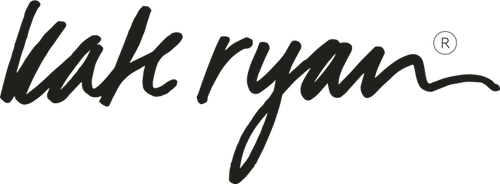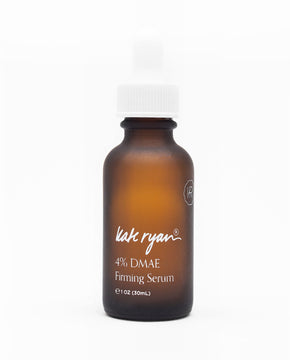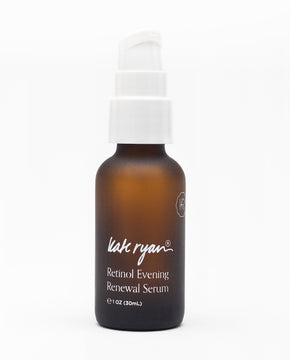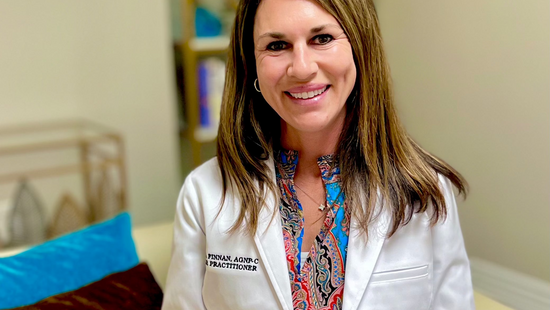Pores have always been a topic of conversation among friends and are a frequent topic of magazine articles, blog posts, etc.. We’ve been trying to make them smaller, unblocked and unclogged for forever. There always seems to be a new tool, strip or mask to purchase just in case that is the answer to the age-old struggle with pores.
For as much attention as they receive, do you really know what a pore is? Do you know why pores can appear large? Do you know if there is a safe way to effectively care for your pores? Do you know if there are certain types of products or procedures that can help minimize pores and keep them unblocked and unclogged?
Let’s find out!
What are pores?
Pores are natural, small openings in the skin at the top of hair follicles that release oils and sweat. There are actually two kinds of pores: oil pores and sweat pores.
Oil pores are connected to an oil gland and cover the surface of the skin. The only parts of the skin that do not have oil pores are the palms of the hands and the soles of the feet. Oil pores can be large enough to be seen, so the concern about large and/or blocked pores is usually from oil pores. This pore is made up of a sebaceous gland (produces oil), hair, hair follicle, and muscle. The sebaceous gland deposit sebum or skin oils on the hair which then brings the skin oils to the surface. It's important to understand this because our skin oils help some with anti-aging by waterproofing the skin and preventing moisture-loss to the environment.
Sweat pores also cover the surface of the skin, but are really tiny and can’t be seen.
What do pores do?
Pores are actually very important! A simple explanation is that pores remove oil, dead skin cells, and other impurities from the skin.
To dive in a little deeper, oil pores lubricate the skin to keep it supple, moisturized, and healthy. Sweat pores allow for sweat to travel from the sweat glands to the surface of the skin, which helps maintain proper body temperature. There are two types of sweat glands: eccrine glands produce most of the sweat and apocrine glands that produce a thicker, odor-causing sweat in the armpits and groin area.
What causes blocked pores?
Blocked pores occur for many reasons including:
- Excess oil,
- Dry skin,
- Dead skin cell buildup, and
- Dirt and oil stuck beneath the surface of the skin.
All types of acne (pimples, blackheads, breakouts, etc.) are caused by the skin closing over a blocked pore. Cysts occur when an oil gland swells around a blocked pore.
Sweat pores can be blocked as well, causing perspiration to be trapped under the skin, which then becomes a heat rash.
What causes large pores?
Large pores are most often caused by one or more of the following reasons:
1. Genetics. If large pores were passed down to you, reducing their size will likely be more of a challenge.
2. Clogged Pores. When pores are clogged with oil, dead skin cells, bacteria, etc., they appear larger than normal.
3. Sun exposure. Sun damage can thicken the skin, which causes larger pores. The sun can also remove collagen, elastin and hydration from the skin, and this causes pores to look bigger as well.
4. Aging. As we get older, the skin loses elasticity, which causes the sagging that makes pores look larger. Additionally, the skin thickens with age, and when tiny skin cells gather around pores, the pores appear larger.
5. Cigarette smoking. If you already have large pores, smoking cigarettes will make them look even larger, so here's yet another reason to kick that habit!
What are the best ways to care for large pores at home?
There are a number of things that you can do to keep your pores healthy! Here are five simple recommendations:
1. Wash your face twice each day. This is a great way to actively remove oil and dirt, which as we know, leads to clogged pores. To help reduce oil and pore size, we recommend Kate’s Salicylic Cleanser because it exfoliates the surface of the skin while penetrating into pores to combat acne and inflammation. To remove heavier base makeups, sunscreens, etc., we also highly recommend considering the double cleanse method - more on that here.
2. Follow face washing with toner once or twice daily. An alcohol-free toner like Kate’s Balancing Nutrient Toner will gently dissolve impurities that remain on the skin following washing. This Toner, which is gentle enough for all skin types, will protect the skin as well as help hydrate, soften and smooth.
3. Apply serums daily. Some serums can help with blocked and large pores. Kate’s Retinol Evening Renewal Serum renews the surface of the skin, which makes pores less visible (among many other benefits for skin.) Kate’s 4% DMAE Firming Repair Serum provides nourishment for the skin while tightening pores and firming sagging skin.
4. Don’t forget to wear sunscreen each and every day! Since sun exposure leads to larger pores, sunscreen acts as a method of prevention for increased pore size.
5. Use an exfoliating mask weekly. Exfoliating helps remove dead skin cells from the upper layer of the skin. Since dead skin cells can clog pores and make them appear larger, exfoliating regularly will help alleviate this issue. Kate’s Clearly Radiant Enzyme Mask is a vitamin-rich peel that gently exfoliates the skin and benefits sun-damaged skin by promoting a more even skin tone.
Are there professional skincare treatments that minimize pore size?
If your pores aren’t reducing in size as much as you had hoped, you may benefit from a professional cosmetic procedure. Here are five treatments you may consider:
1. Facials are great at exfoliating the surface of the skin and unclogging many of the pores on the face. While none of the professional skincare treatments are permanent ways to reduce pore size, results from a facial will not last as long.
2. Microdermabrasion is a minimally-invasive treatment that takes about 30 minutes and helps boost collagen and elastin while exfoliating. This procedure improves overall skin health.
3. Microneedling is quickly gaining popularity as a way to reduce pore size along with other benefits. Tiny needles are put in the skin followed by the application of serums and moisturizers, which allows the products to work more effectively by penetrating deeper into the layers of the skin.
4. Chemical peels are when an acidic solution is used to remove the outer layer of the skin. A peel can successfully improve the skin’s appearance and texture, including shrinking enlarged pores. There are different types of peels that work at varying depths of the skin, and a dermatologist can help determine which is best for your skin type and goals.
5. Laser treatments have a variety of options and some that can be combined with a chemical peel for even better results. Due to their safety, laser treatments are now performed more often than chemical peels. A laser treatment can clear pores by killing the bacteria that clogs pores and results in acne and larger pore size. A laser treatment can stimulate collagen, which will help pores appear smaller. Again, a dermatologist will be helpful for deciding which type of laser treatment may be most beneficial.
Contact Us!
Pores are important and your skin needs them, but there are many different ways to help reduce their size. We are happy to discuss your skin and the products that may be best to get your pores healthy – and maintain pore health! Please email us at hello@kateryanskincare.com to get started on a conversation!
Be well,
Jennifer






